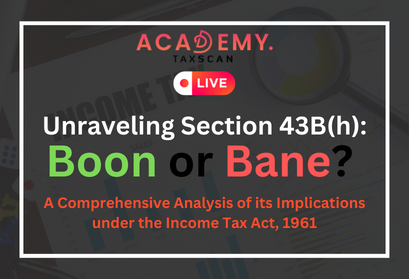International Asexuality Day: Understanding Asexual Identities And Experiences

Table of Contents
Defining Asexuality: Beyond the Stereotypes
Asexuality, often abbreviated as "ace," is a sexual orientation characterized by a lack of sexual attraction to others. This doesn't mean asexual individuals lack the capacity for intimacy or fulfilling relationships; it simply means they don't experience the same type of sexual attraction that many others do. Crucially, asexuality is not a choice, a mental illness, or a phase. It's a fundamental aspect of a person's identity. Many misconceptions surround asexuality, often portraying asexual individuals as frigid, incapable of love, or somehow "broken." These stereotypes are harmful and inaccurate.
- Sexual Attraction vs. Romantic Attraction: It's important to differentiate between sexual attraction (a desire for sexual activity) and romantic attraction (a desire for a close, intimate relationship). Asexual individuals may experience romantic attraction, and many have fulfilling romantic relationships.
- The Asexual Spectrum: Asexuality is not a monolithic identity. The asexual spectrum encompasses a wide range of experiences and identities. This includes:
- Demisexual: Individuals who only experience sexual attraction after forming a strong emotional connection with someone.
- Gray-asexual: Individuals who experience sexual attraction infrequently or under specific circumstances. This can include people who identify as demisexual, as well as others who fall somewhere between asexual and allosexual (experiencing sexual attraction).
- Fulfilling Relationships: Asexual individuals can and do have fulfilling romantic relationships, friendships, and intimate connections. Their relationships may prioritize emotional intimacy, companionship, and shared activities over sexual activity.
The Asexual Spectrum: Exploring Diverse Identities
The asexual spectrum is incredibly diverse, encompassing a multitude of identities and experiences. Understanding this diversity is crucial to fostering genuine acceptance and inclusivity. While demisexual and gray-asexual are frequently discussed, many other identities exist, and individuals may use other terms to describe their unique experiences.
- Demisexuality: Demisexual individuals only experience sexual attraction after forming a deep emotional connection with someone. The emotional bond is a prerequisite for sexual attraction.
- Gray-asexuality: This term covers a range of experiences, where someone might experience sexual attraction rarely, under specific circumstances, or with low intensity. The experience is fluid and can vary over time.
- Aromantic Asexual: Some individuals identify as both aromantic (lacking romantic attraction) and asexual. Others experience romantic attraction but not sexual attraction.
- Respecting Self-Identification: It's crucial to remember that these are just some examples, and individuals' experiences are unique and valid. Respecting individual self-identification is paramount, and avoiding generalizations is essential.
Challenges and Experiences of Asexual Individuals
Asexual individuals often face significant challenges, stemming largely from societal misconceptions and a lack of representation. These challenges can have a profound impact on their mental health and well-being.
- Invisibility in Media and Culture: Asexuality is often overlooked or misrepresented in mainstream media, leading to invisibility and a lack of understanding.
- Misconceptions and Discrimination: Common misconceptions about asexuality can lead to discrimination, prejudice, and invalidating experiences. This can significantly affect self-esteem and relationships.
- Difficulty Finding Understanding Partners: Finding romantic partners who understand and accept asexuality can be challenging, leading to feelings of isolation and loneliness.
- Building Community: Connecting with other asexual individuals through online communities and support groups can provide vital validation, support, and a sense of belonging.
Celebrating Asexuality and Promoting Understanding
International Asexuality Day provides a valuable opportunity to celebrate asexual identities, promote understanding, and challenge misconceptions. We can all contribute to creating a more inclusive world.
- Ways to Celebrate: Participate in online discussions, share resources, educate yourself and others about asexuality, and show your support for the asexual community.
- Resources and Community: Seek out online communities, support groups, and organizations that promote asexuality awareness and provide resources for asexual individuals.
- Promoting Inclusivity: Actively challenge misconceptions you encounter, create safe and inclusive spaces for asexual individuals, and amplify asexual voices.
Conclusion: Embracing Asexuality and Promoting Inclusivity
International Asexuality Day is a vital reminder of the importance of understanding and celebrating the diversity of human sexuality. Asexuality, with its spectrum of identities and experiences, deserves recognition, respect, and understanding. Let's work together to create a more inclusive world where all sexual orientations, including asexuality, are accepted, celebrated, and fully integrated into the fabric of our society. Share this article to increase awareness, join online communities dedicated to asexuality, and actively promote asexuality awareness and acceptance. Let's make this International Asexuality Day a catalyst for change and a step towards a more compassionate and understanding future.

Featured Posts
-
 Mississippi Income Tax Elimination A Boon Or Bane For Hernando
May 19, 2025
Mississippi Income Tax Elimination A Boon Or Bane For Hernando
May 19, 2025 -
 Gazze Seridi Nde Yerinden Edilen Filistinlilerin Yasam Kosullari
May 19, 2025
Gazze Seridi Nde Yerinden Edilen Filistinlilerin Yasam Kosullari
May 19, 2025 -
 Forum Du Logement Gencay Tout Savoir Pour Y Trouver Votre Futur Logement
May 19, 2025
Forum Du Logement Gencay Tout Savoir Pour Y Trouver Votre Futur Logement
May 19, 2025 -
 Resistance Grows Car Dealers Challenge Electric Vehicle Regulations
May 19, 2025
Resistance Grows Car Dealers Challenge Electric Vehicle Regulations
May 19, 2025 -
 19 Millions D Euros Supprimes Le Financement De L Universite Islamo Gauchiste Reduit
May 19, 2025
19 Millions D Euros Supprimes Le Financement De L Universite Islamo Gauchiste Reduit
May 19, 2025
